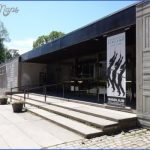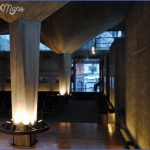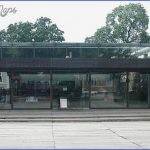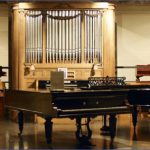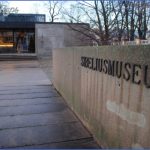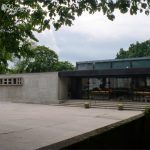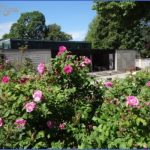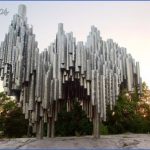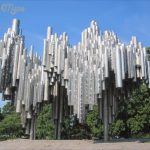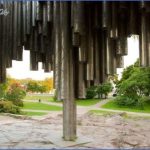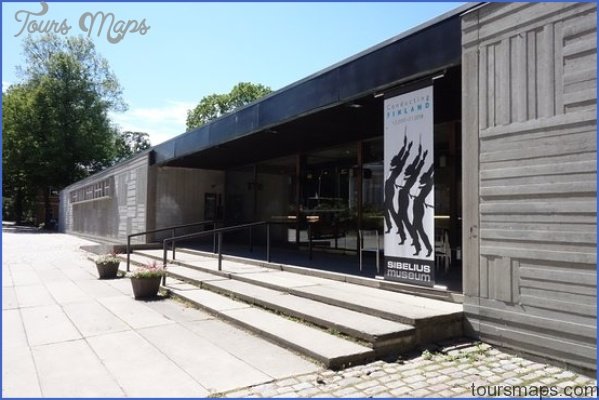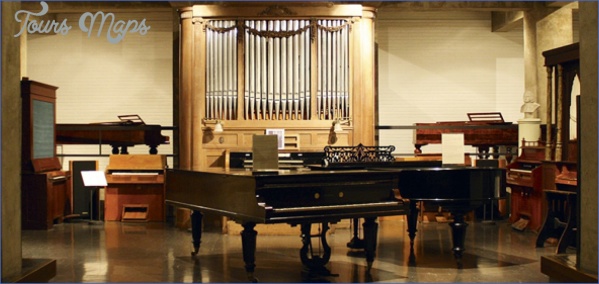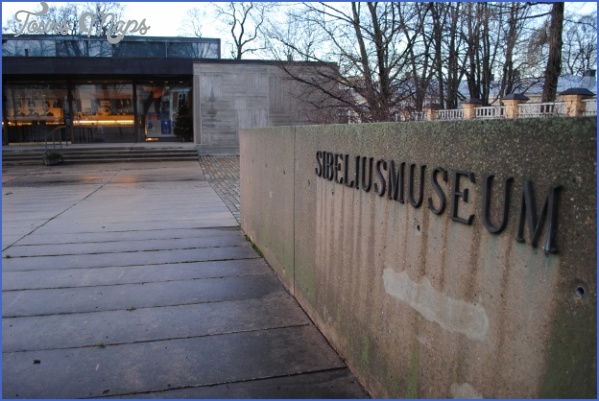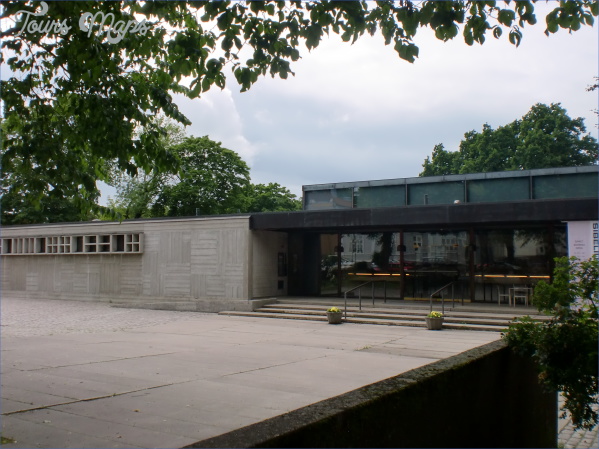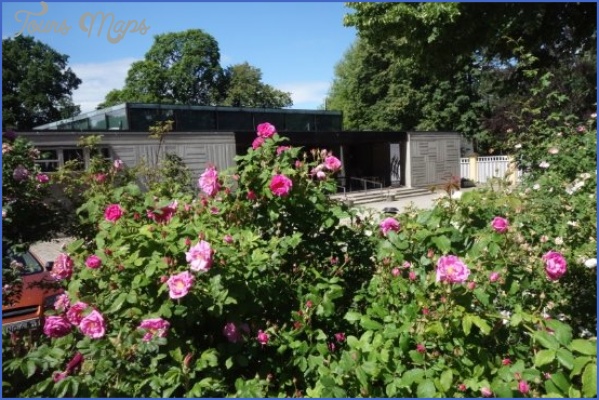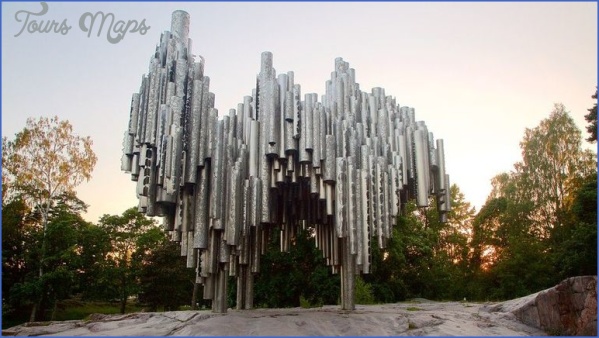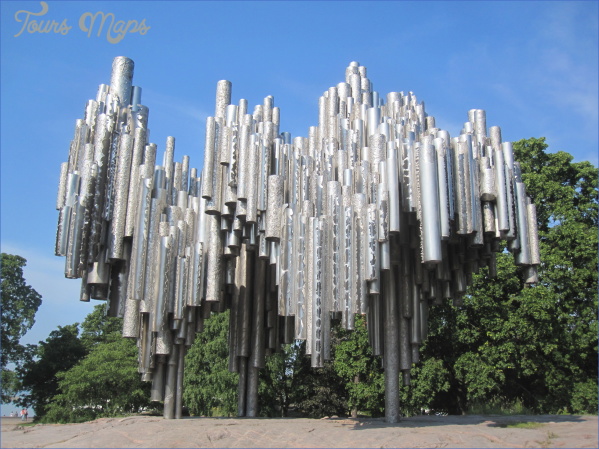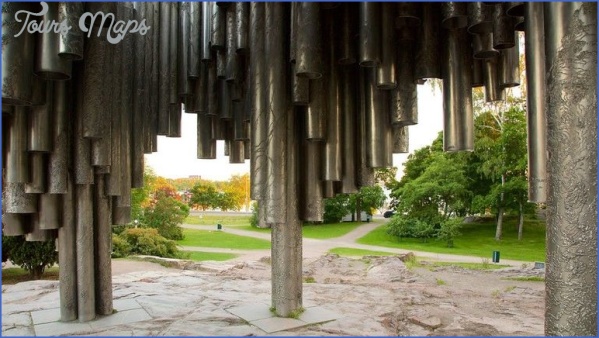SIBELIUS MUSEUM
Sibelius was born at a fortunate moment. Finnish cultural identity was beginning to take shape, culminating in a wave of national Romanticism, and with his choral and symphonic evocations of Finnish mythology he was quickly recognized as a national figure. By the time of his full maturity statues and monuments were erected in his honour, streets, parks and a university museum were named after him. In Helsinki the national conservatory is the Sibelius Academy of Music; a music festival and a prize also bear his name. When in 1957 he died, aged 91, after three decades of silence as a composer, he was the symbol of Finnish music. Within a decade his birthplace was a museum; and five years after his wife’s death in 1969 their home for over 50 years, where he died, was opened to the public. There are now four museums and memorial places within easy reach of Helsinki commemorating Sibelius’s life and works.
About 100 km to the north, on Lake Vanajavesi, is the former provincial capital, Hameenlinna, where Jean Sibelius was born on 8 December 1865. His father was the town physician, attached to the military garrison. Their home, also the doctor’s surgery, was rented, and when in 1868 Jean’s father died of typhus, leaving his wife expecting their third child and in dire financial
SIBELIUS MUSEUM Photo Gallery
Sibelius’s birthplace in Hameenlinna straits, the family moved to the lakeside home of their maternal grandmother, who leased nearby properties for the growing family (Jean, his elder sister Linda and younger brother Christian) before they were able to settle in a new, spacious wooden house opposite Tahtipuisto Park, at Lantinen Linnakatu 15 (now Sibeliuskatu), where they lived from 1874 until 1885. It was there that Sibelius spent his happiest childhood years, learning the piano and the violin and trying his hand at composition for the family piano trio with his pianist sister and cellist brother. Of the family houses, the only one to survive is the house of his birth, which dates back to 1834. Thanks to the efforts of the Hameenlinna Sibelius Society and the local authority, it was restored in 1965, Sibelius’s centenary year, and its four principal rooms were opened to the public. The first, which was probably the doctor’s surgery, has a series of display cases with facsimiles of family documents, including letters written by Sibelius in the 1870s, some family possessions, and photographs, some of them showing Hameenlinna during Sibelius’s childhood. The second displays a piano that he once owned and his brother’s cello along with further photographs and an array of medals struck in his honour. The third room, window-lined and probably the family dining-room, is set up as a small recital hall with a Steinway miniature grand. The final room, originally a bedroom, and probably the room in which Sibelius was born, is furnished as a salon, with the harmonium that belonged to his Aunt Julia, his first piano teacher, and several other items of family furniture and ornaments. In addition to concerts the house is the scene of an annual birthday celebration. Aunt Julia’s harmonium accompanied the family on their summer visits to the coastal resort of Loviisa, 90 km east of Helsinki. By the 1870s Loviisa was a thriving spa, with a casino and rich musical life: extraordinarily, it boasted a string quartet, a wind septet, an orchestra and a male-voice choir. In 1817 Sibelius’s paternal grandfather had acquired a red wooden house, built ten years before, in Lantinen Tullikatu (now Sibeliuksenkatu). Until 1879, when his grandmother died and her maiden daughter Evelina moved to Turku to live with her brother, Sibelius stayed there each year with his mother, brother and sister. In addition to music-making, the children enjoyed a circle of local friends, Aunt Evelina’s puppet shows and sailing among the islands of the archipelago. Sibelius later claimed to have taken his violin on the boat to entertain his sister and brother with improvisations.
In 1885 the family moved from Hameenlinna to a small villa in the Brunnsparken of Helsinki while Sibelius was studying there, first law and then music; they were joined by Aunt Evelina, who took in sewing to help the family finances. Sibelius was in Berlin during the winter of 1889 and in Vienna the two following winters (living at Wiedner HauptstraBe 36). But in the summers up to 1893, when Evelina died, Loviisa drew them back.
As in Hameenlinna, music-making in Loviisa often involved their neighbours, the Sucksdorffs, and in 1887 it was to them that Sibelius dedicated a quartet in G minor for piano, harmonium, violin and cello; the following summer he and his sister and brother performed a new piano trio, and in 1889 he spent the summer composing the op.4 String Quartet. Jean and Christian also regularly took part in concerts at the casino, playing his Violin Sonata and Cello Fantasy and an Andantino for the Loviisa Wind Septet. During his most extended stay in Loviisa, from the summer of 1891 until the end of January 1892, Sibelius embarked on his first major composition: Kullervo, a symphonic poem for soloists, chorus and orchestra inspired by the myths of the Kalevala and the epic rune singing of Larin Paraske; it was first performed in Helsinki the following spring.
Loviisa provided an important nursery as well as a ‘sanctuary’ (as he called it) during his maturation as a composer. When in 1892 he left, aged 26, he had grown out of it, as he admitted in a letter to his fiancee Aino Jarnefelt. Today the house is not so much a museum as a memorial place, open for a few weeks each summer, when it hosts exhibitions of modern art, and for recitals in the winter. One room of what were originally four reflects the social context for the composer in the commemoration of ‘Aunt Evelina’s salon’, where furnishings from the 1880s and items such as facsimiles of Sibelius’s letters, a sewing box and a puppet theatre are displayed. In 1990 the town inaugurated an annual event, the Sibelius Days, planned to take place every eight years.
The third and most evocative memorial place is the house where Sibelius lived for 53 years, Ainola, named after his wife Aino (herself named after a maiden in the Kalevala). Perched on a wooded hill surrounded by fields near the town of Jarvenpaa, 38 km north-east of Helsinki, Ainola offered Sibelius and his young family a rural refuge from the city. Like his father, Sibelius had found from his early 20s the temptations of good living – fine food, drink and clothes and the best seats at the opera -equally impossible to resist and to fund (even after 1897 when he was awarded a generous state pension). Flight from the city seemed prudent and at the turn of the century Jarvenpaa, at the top of Lake Tuusulanjarvi with a railway connection to Helsinki, was already becoming a
Rights were not granted to include these illustrations in electronic media Please refer to print publication
Ainola, Jarvenpaa home to a colony of writers and painters. Aino’s brother, Eero Jarnefelt, himself a highly regarded painter, suggested that Jean and Aino acquire land there to build a house, which was then designed by Lars Sonck in the National Romantic Jugendstil and built in 1904. The first major works Sibelius composed at Ainola were the Third Symphony (1904) and the final version of the Violin Concerto (1905); the last were the Seventh Symphony (1924), Tapiola (1925) and incidental music to The Tempest (1926) – not counting the famous Eighth Symphony, which he destroyed. Although the Sibeliuses continued to maintain a flat in Helsinki, Ainola was where the family of five daughters was based except during the 1918 civil war. Until the late 1920s Sibelius was often away, travelling in Europe and once to the United States, conducting, receiving honorary degrees and awards and acting as an unofficial Finnish ambassador. When he was at home, strict regimes of silence were maintained in the household and by the neighbours when the Master was in his study, where the lights often burned through the night. Even running water was deemed too noisy, necessitating the digging of seven wells to service the house; modern plumbing was not installed until 1960. But the famous ‘silence of Jarvenpaa’ refers to an artistic silence, precipitated, many think, by his alcoholism. In his defence he once observed, in a letter to his friend the American music critic Olin Downes, that composing had not become easier as he had grown older – and, he might have added, burdened with the fervent expectations of an international public. Sibelius died on 20 September 1957; Aino followed on 8 June 1969. Their graves are in the Ainola garden, surrounded by Aino’s prize apple trees. Ainola was sold to the nation and in 1974 the grounds and five ground-floor rooms of the house were opened to the public. A remnant of the rule of silence persists: music is heard only in the small visitor centre near the car park on the edge of the property. The house is presented much as it was in Sibelius’s last years. Each room boldly contrasts with the others. The drawingroom, in pale green, is dominated by the Steinway miniature grand, a 50th birthday present from his admirers in 1915, portraits and a bust of the composer. Visitors to the dining-room – with its rustic beams and natural wood walls, its corner clock and hanging rug, its window seat with a view of the grounds below and a table designed by Aino with cane-backed chairs – should pause at the green-brick fireplace where Sibelius is said to have burned many of his manuscripts, perhaps including the draft of the Eighth Symphony, at the end ofWorld War II. The dark, rustic corner library (originally the girls’ nursery) contains his 3000-volume library, oversized armchairs designed more for comfort than for elegance, a radio and a gramophone. Next to it, and off the diningroom, is the pale, austere room where he died; in Sibelius’s later years, furnished with a tiny bed and a large desk, it served as both bedroom and study (the original one was upstairs). On display are his white summer suit, hat and walking-stick; the tiny washroom is complete with his blue toothbrush. Finally, one can examine the large period kitchen, once the domain of two domestics, and an upstairs bedroom. Outside, visitors can stroll round the four-hectare property, through the forest, past the graves, the sauna and the barn, and through the orchard and the vegetable garden. There is also a Sibelius Museum in Turku (or Abo: it has always been predominantly Swedish-speaking), 165 km west of Helsinki, on the coast. This is not primarily a museum of Sibelius; it took his name as a tribute, with his permission, in 1949. Its origins go back well beyond his time, to the oldest music society in Finland, which was founded in 1790, and it houses the music history collection and the musicology department of Abo Akademi University as well as a collection of 900 musical instruments, a third of which are on display in the exhibition halls surrounding the two auditoria where concerts, lectures and other events regularly take place. But it does in fact house a substantial collection of Sibeliana and it is a centre of Sibelius research. It moved into its present building, on the banks of the river Aura, in 1968.
Most of Sibelius’s manuscripts are in Helsinki University Library. The collection here however includes the autograph of a cantata, Maan virsi (‘Song of the Earth’), composed in 1920 for the inauguration of the university, and first editions of nearly all Sibelius’s compositions published by the early 1930s (the bequest of a friend of the composer’s), Sibelius manuscripts from the collection of Adolf Paul, letters and newspaper cuttings. A large room devoted to a Sibelius display shows a selection of facsimiles of sketches and manuscripts, early editions and recordings, portraits and busts, commemorative stamps and various personal items including the composer’s cane, hat and cigar box, and his doctoral robes from Yale in 1914. A caricature of Sibelius shows his wrinkles, corresponding with the number of symphonies he composed.
Maybe You Like Them Too
- Top 10 Islands You Can Buy
- Top 10 Underrated Asian Cities 2023
- Top 10 Reasons Upsizing Will Be a Huge Travel Trend
- Top 10 Scuba Diving Destinations
- World’s 10 Best Places To Visit

